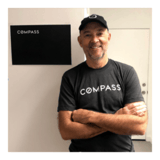Summary
Most design operation professionals will have to make a choice: to work solely as an organization’s internal consultancy or play an additional role in scaling design capabilities throughout an organization. If teams focus on the former, how will they get better projects and collaborators from their organization? If teams settle on the latter, how will they navigate scaling their design capabilities? In this interactive workshop, we’ll discuss how teams can attract better internal projects and how to transfer essential capabilities, with a particular focus on co-creating and measuring successful outcomes. Join Andrew Webster, Vice President of Transformation at ExperiencePoint, to learn: What tools can help facilitate your team’s journey How to start implementing scaling strategies What successful outcomes look like
Key Insights
-
•
Non-designers benefit greatly from reaching intermediate design fluency but investing in expert-level design skills for them yields diminishing returns.
-
•
Scaling design capability requires developing both skills and the right environmental conditions; neglecting either creates frustration or failure.
-
•
Design ops play a pivotal role in enabling success metrics definition, aligning teams, and leveraging organizational infrastructure to scale design impact.
-
•
Behavioral indicators, such as changes in language and team habits around user feedback, are critical measurable signs of growing design capability.
-
•
Starting scaling efforts in areas with both high potential impact and dissatisfaction with the status quo increases chances of success.
-
•
Scaling design capability behaves like a social movement that needs community, shared purpose, and incremental habit integration rather than training alone.
-
•
Having a core multidisciplinary team that includes ops and leadership roles is essential to overcoming political and systemic barriers to scaling design.
-
•
Projects that demonstrate early wins and produce emotionally resonant success stories act as currency to enlist broader organizational support.
-
•
Design capability improvements can lead to tangible business outcomes including significant cost savings and higher employee engagement, impacting retention.
-
•
Tools like Mural facilitate effective remote collaboration for team chartering, brainstorming, and aligning on success visions during capability scaling initiatives.
Notable Quotes
"Everyone should borrow from some essential design tools and sensibilities to do their work better, even if they aren’t designers."
"Changing someone’s way of thinking happens best not by talking about thinking but by giving them a tool whose use leads to new ways of thinking."
"A changed person in an unchanged environment is worse off than if you’d never inspired them in the first place."
"Scaling design capability behaves like a social movement, not like a training program that you can just flip on and off."
"You’ll know you’re successful when behavioral language changes, like starting with user needs instead of jumping to solutions."
"If people already love their process, you’re fighting their emotional state; start where there’s dissatisfaction with the status quo."
"Better clients bring better projects, which allows design teams to focus on higher-order, impactful work."
"Having a core team with the right focus and a defined vision of success is necessary before scaling capability broadly."
"It’s more effective to achieve a tipping point of buy-in within a population than to spread resources too thinly across many."
"Design is never what connects people; shared purpose, like serving users better, is what bonds a community scaling design capability."
Or choose a question:
















More Videos

"A good story that people can retell is key for global communication, even if it distorts a bit."
Adam Cutler Karen Pascoe Ian Swinson Susan WorthmanDiscussion
June 8, 2016

"Middle managers are responsible for the how—process, coordination, and communication—and you don’t see the value of that until it’s missing."
Peter MerholzThe Trials and Tribulations of Directors of UX (Videoconference)
July 13, 2023

"Governance isn’t about choking creativity, it’s about putting bounds and clarity that enable purposeful collaboration."
Lisa WelchmanCleaning Up Our Mess: Digital Governance for Designers
June 14, 2018

"The time for action is now, and it must be collaborative."
Vincent BrathwaiteOpener: Past, Present, and Future—Closing the Racial Divide in Design Teams
October 22, 2020

"OKRs are a tool for each of us to tidy our house and focus on what’s important."
Brenna FallonLearning Over Outcomes
October 24, 2019

"It’s human infrastructure—community organizing, unions, activists—that saves the day when other infrastructures break down."
Tricia WangSpatial Collapse: Designing for Emergent Culture
January 8, 2024

"Diverging and converging around the business model canvas helped us test and prototype delivery methods for the value propositions."
Edgar Anzaldua MorenoUsing Research to Determine Unique Value Proposition
March 11, 2021
"Leadership buy-in is really important—having an executive who understands the value of knowledge creation, distribution, application, and evaluation."
Designing Systems at Scale
November 7, 2018

"Randomization is magic — it evenly distributes confounds so the only difference affecting results is your change."
Erin WeigelGet Your Whole Team Testing to Design for Impact
July 24, 2024
















